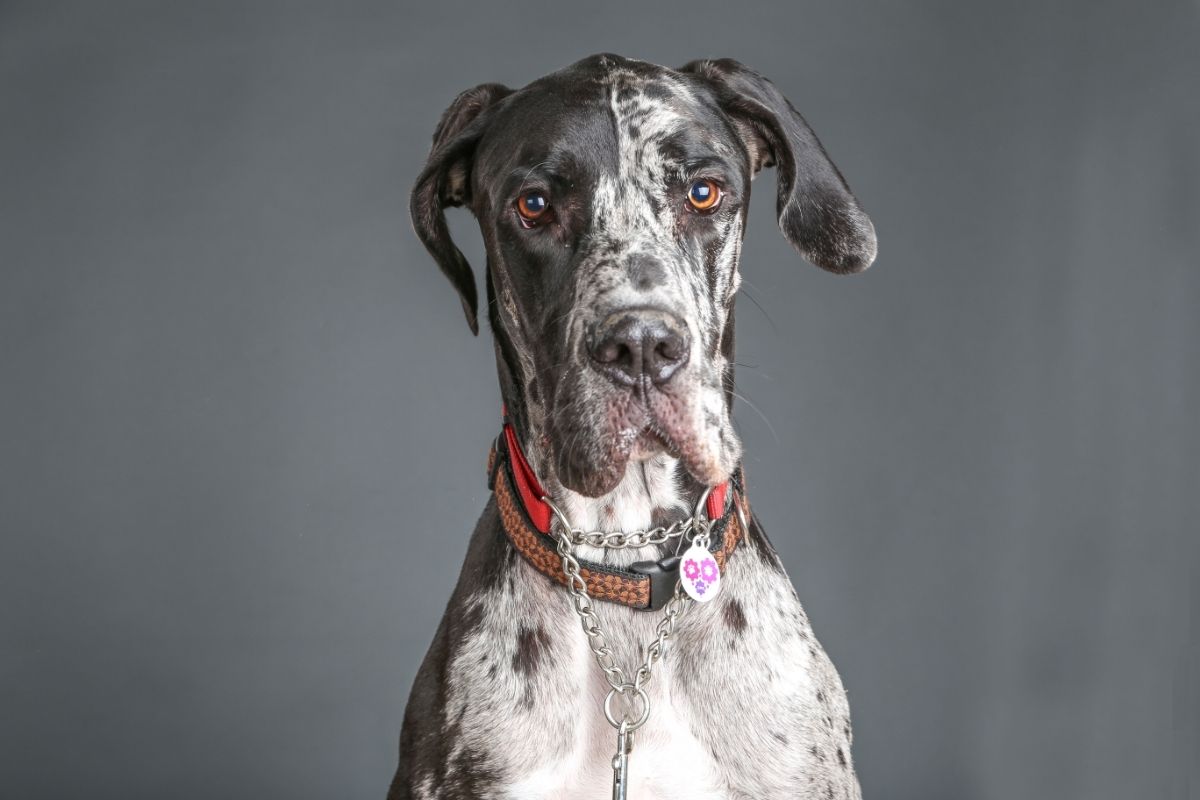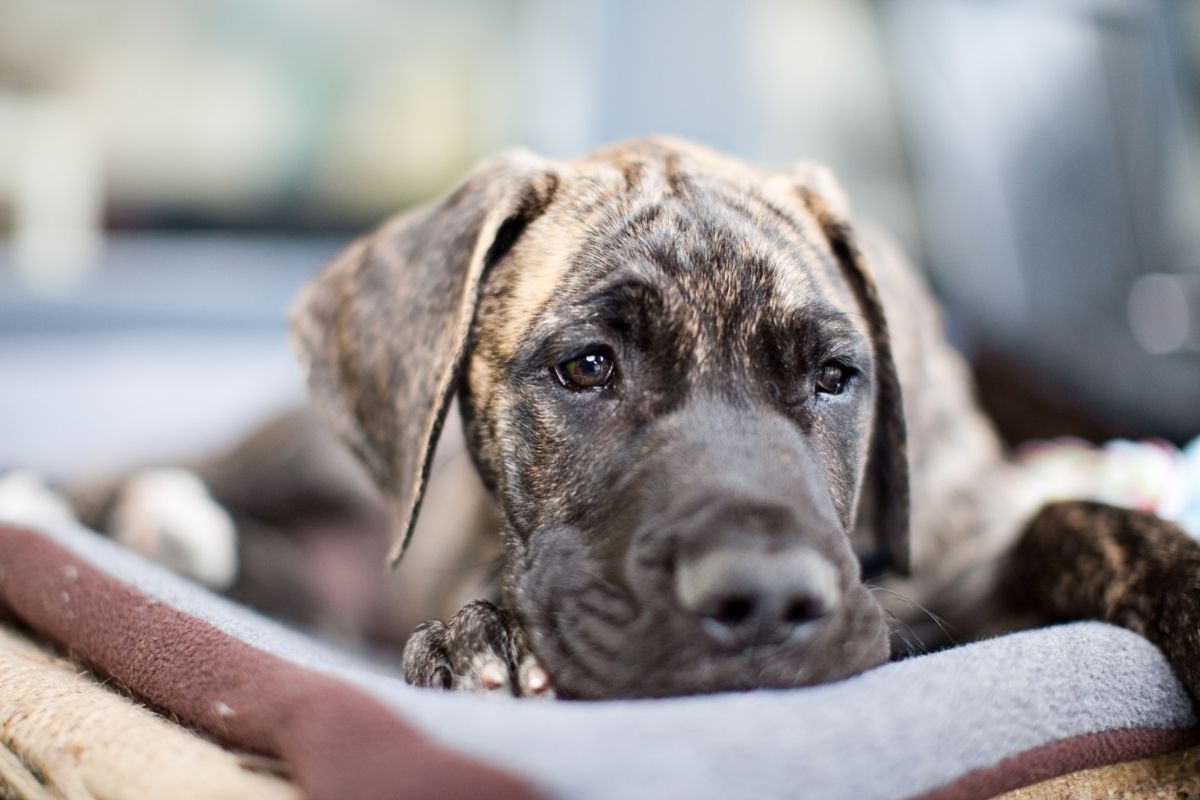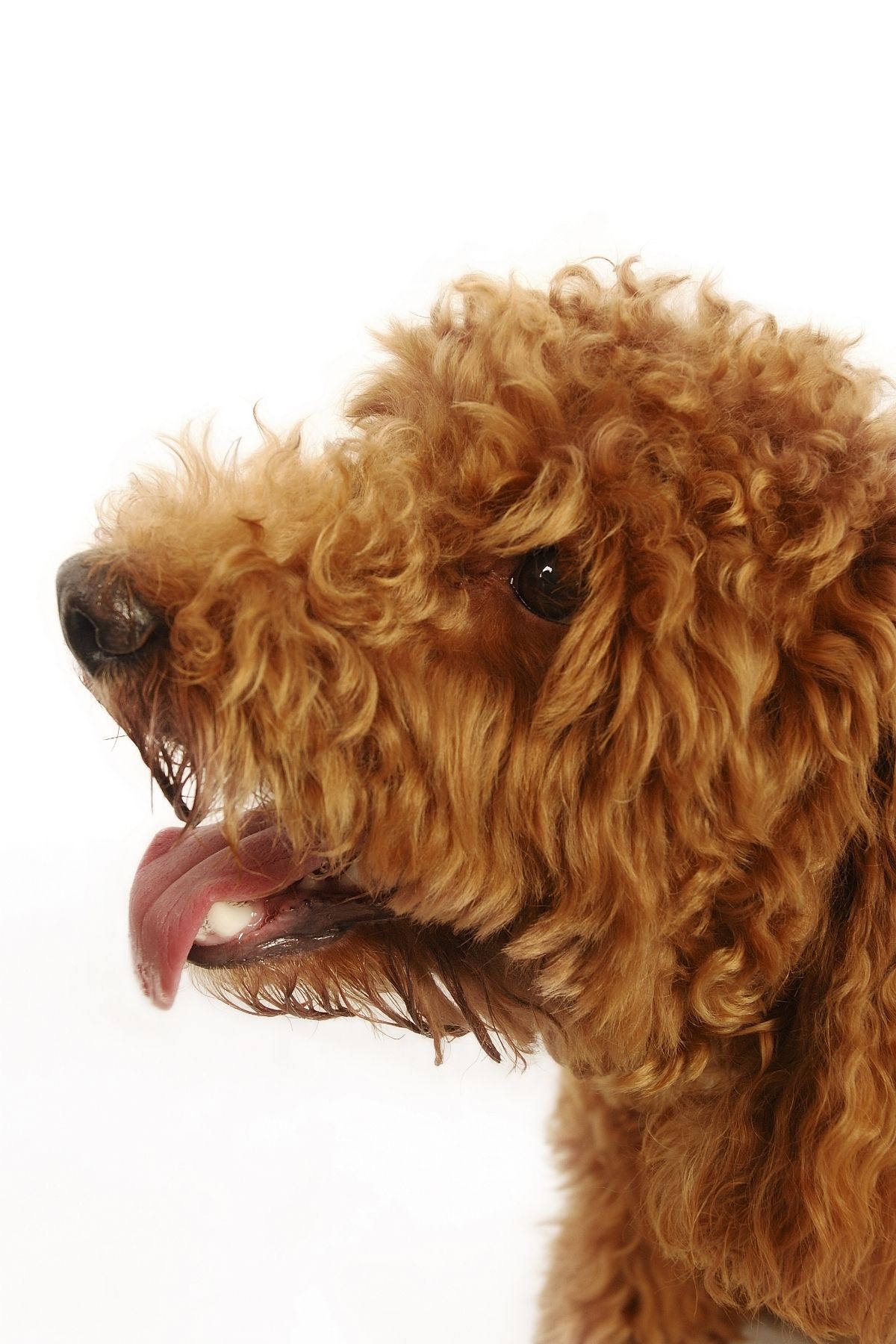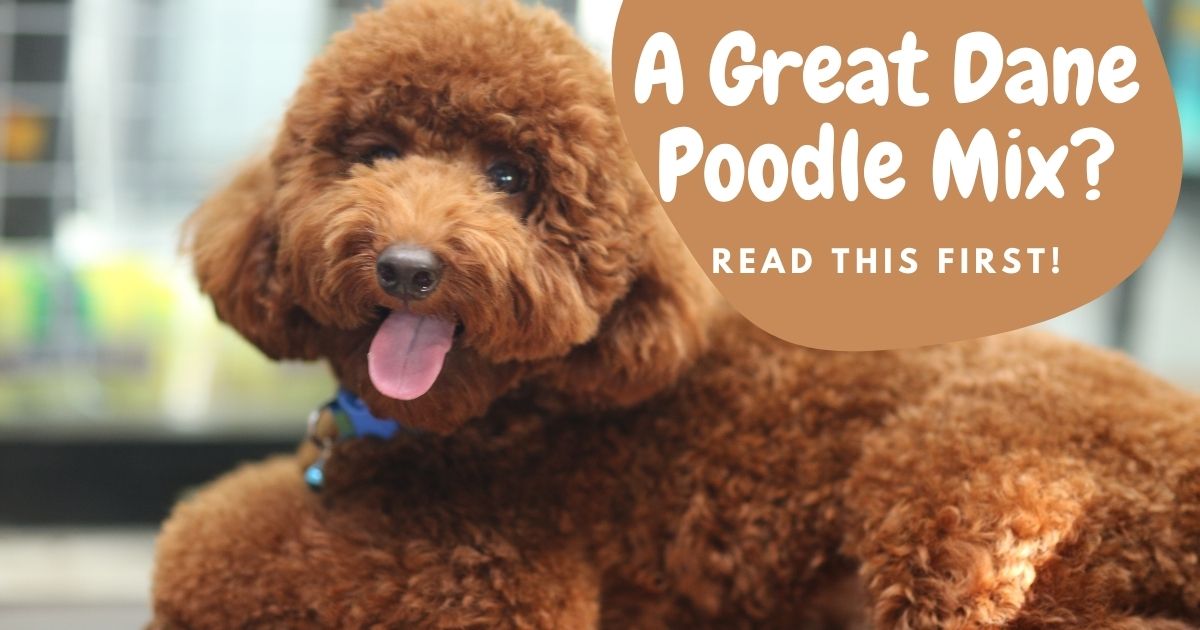What is a Danoodle?
The Great Danoodle is a mixed-breed dog, not a purebred. A Great Dane poodle mix is a hybrid between a Great Dane and a poodle. The Great Dane and the regular poodle are popular dogs, so it’s no surprise that the mixture has piqued people’s interest.
This article will give you a comprehensive overview of everything you need to know about this fascinating breed.

The Great Danoodle’s Life Expectancy
A Great Danoodle’s life expectancy is something to worry about. Great Danoodles, like other larger dogs, have a shorter lifespan. They will typically accompany you for 8 to 12 years of your life.
The Great Dane Poodle Mix Appearance
“How big can I expect a Great Danoodle to be?” This is probably the first question about this cross. There is no one-size-fits-all solution. Crosses between first and second generations are notoriously difficult to anticipate. The puppy may resemble either parent.
This also applies to their height and weight, so the best we can give you is a range of possibilities. It’s worth noting that the most common size of poodle involved is the Standard poodle. You can expect the Great Dane poodle mix to be between 15 and 32 inches (38 and 81 centimeters) tall and weigh between 40 and 175 pounds (18 and 79 kilograms).
These are enormous ranges. You can use the heights and weights of the parent dogs to get a more accurate estimate of a specific puppy. The puppy will most likely be between its parents’ height and weight ranges. Either parent breed may influence the Great Dane poodle mix’s physical traits.
They might have the Great Dane’s robust and muscular build or the poodle’s more delicate and square build. In terms of coat, the Great Danoodle can inherit the poodle’s curly and corded coat! However, they may acquire the Great Dane’s short, smooth coat.
Yellow-gold, black, white, blue, gray, silver, apricot, brown, merle, and cream are all possible coat colors. There may also be black marks.
Caring for a Doodle
Your dog is a ‘big guy,’ requiring daily activity and exercise. Allow them to play to their hearts’ content while you keep them off the leash for an hour or two. This should be in an open area or a yard. Take it for a couple of daily jogs or walks (on a leash this time), especially if you notice your dog is beginning to gain weight. Let’s look at how you can take care of your great doodle.
Training
It won’t be challenging to train your Dane Doodle because it is already obedient, intelligent, and eager to please you. Using a variety of goodies and compliments, on the other hand, will make your job easier.
- Teach your dog helpful tricks to take advantage of its drive to please you. Train it to collect trash and dispose of it properly. Bring your dog to an open space or a yard with some crushed papers, tissues, fruit peels, or similar items (to teach it what “waste” means) and a trash container. After that, toss the items in random order and tell your dog to fetch one of them. Say a command word like “fetch it” while pointing at the garbage can. Pick it up yourself and call your dog there if it doesn’t understand. Give it the garbage until it takes it in its mouth.
- Similarly, take your dog to the rubbish can and command it to un-grasp it from the bin. Reward it right away, and lavish praise. Repeat the method a few times and keep it up regularly. Your dog will quickly learn to pick up trash and keep your home tidy.
- Because your dog likes you and enjoys being in your presence, separation anxiety is unlikely to be a problem. So, don’t make a huge deal before you go to work or get home. Stay calm and unconcerned, as if living without you for a few hours every day is a part of its daily routine. From 15-20 minutes before you leave until you return, do not chat, touch, or make any eye contact.
Diet/Feeding and Grooming
Four to five cups of high-quality dry dog food (kibbles), split into two to three meals daily, is plenty for them, given their size and weight. High-quality dog food is beneficial to Great Dane and poodle mix dogs. If they take after the Great Dane’s colossal size, they may require more food than the usual breed.
Also available is puppy food specifically for Great Dane poodle mix puppies. As you know, this breed inherits coats, amongst other things.
It is the type of coat that will determine the grooming needs. You can keep grooming simple if they have the Great Dane’s short and sleek coat. Weekly brushing usually is sufficient; however, they require daily brushing during shedding seasons.
If they adopt the poodle’s natural corded coat, they’ll need a daily brushing down to the skin to keep their fur from matting. You can trim the coat if you want to lessen your daily workload.
Health Concerns
Unfortunately, there are some significant health concerns that you should be aware of before purchasing a puppy from this cross.
Bloat
It happens when the stomach becomes too full of gas, fluids, or food. In this situation, the stomach may inflate to the point where it exerts pressure on the organs surrounding it, cutting off the blood supply. Great Dane poodle mix dogs are at a higher risk of bloating since canines over 99 pounds (44 kilograms) have a 20% higher risk of developing it.
This can soon become lethal, necessitating prompt veterinary intervention. Because both parent breeds are predisposed to acquiring this illness, Great Dane poodle mix dogs are also likely to be at high risk. As a result, it’s critical to educate yourself on the early indications of bloat and learn about the preventative actions you may take.
The following are symptoms of bloating:
- Irritable conduct
- Nausea
- Drooling excessively
Dilated Cardiomyopathy (DCM)
It is a condition in which the coronary arteries in a dog’s heart either obstruct or narrow, making blood pumping more difficult. It could be inherited or acquired as a result of infection. It can lead to death if left untreated. After catching the condition, a dog has an average lifespan of one to three years.
The following symptoms lead to DCM:
- Weakness and exhaustion
- Breathing problems
- Coughing
- Fainting
Corneal Dystrophy
It is a condition that affects the cornea. The cornea of a dog’s eye becomes cloudy due to this condition. It can lead to blurred vision and, in the worst-case scenario, blindness. Only surgical replacement of the cornea can restore eyesight in this scenario.
Although the disease affects the eye, it can give your dog significant discomfort, leading to behavioral changes and excessive barking owing to a lack of appropriate eyesight.
If you see any of the following signs in your dog, you should take him to the veterinarian immediately:
- In the cornea, a gray color develops
- Eyes that are excessively moist or dry
- Corneal erosion
- Light sensitivity
Epilepsy
It is a frequent condition in dogs that affects their brains and causes mild to severe seizures. A stroke, tumor, or infection are some of the possible causes of the disease. Though it is rarely fatal, it can significantly impact your dog’s life and well-being. Therapies and drugs are two options for treatment.
The following are indicators that your dog may be suffering from epilepsy:
- Unconsciousness occurs suddenly
- Falling to the ground unexpectedly or losing your equilibrium
- Drooling excessively
- Unusual actions
Hypothyroidism
It’s a condition where the thyroid gland stops working correctly, leaving the body without enough thyroid hormone. It can be lethal in extreme circumstances.
As a result, if you observe any of the following symptoms in your dog, you should contact your veterinarian right away:
- Gaining weight
- Hair loss is a common problem
- Lethargy
- Skin color changes.
Myotonia
Dogs with this condition lose their ability to move the afflicted muscle. It can shorten your dog’s life by rendering him immobile. Symptoms include:
- Weakness
- Joints are unable to move
- Inability to appropriately manipulate muscles
- Inability to exercise properly
As you can see, the poodle Great Dane mix is susceptible to various health problems. If you decide to buy a puppy, make sure it comes from a reputable and trustworthy breeder. A good breeder should be able to show you the findings of both parent dogs’ health evaluations, so you can be sure you’re getting a healthy youngster.
Parents’ Health Examinations
A Great Dane will require the following tests:
- Evaluation of the hip
- Evaluation by an ophthalmologist
- Thyroid screening
- Cardiac examination
A poodle will require the following tests:
- Evaluation of the hip
- Evaluation by an ophthalmologist
Training Your Great Dane Poodle Mix
Training and Instincts
Because of the Great Dane’s hunting heritage, they may pursue fleeing animals or humans. While intense obedience training will assist, it is still advisable that this dog not be kept with small children or animals that it may harm by its actions. They are enormous dogs, and even if they are merely playing, they can create accidents.
It’s also possible that this breed has guarding and territorial instincts. Although this is rarely strong enough to cause a problem in this breed, it is still aware. If your poodle Great Dane is aggressive or highly high-strung, it may require targeted training to reduce this behavior.
Dogs of the excellent Dane and poodle mix are usually easy to teach because both parent breeds are clever and eager to please. You must train them on obedience and socialization from a young age. Because this cross has the potential to grow into a large and powerful dog, you must maintain control.
Enroll your dog in training classes if you’re having trouble training them independently. Never skip dog training since it will lead to destructive behaviors and habits. This breed’s exercise needs are typically around two to three moderate-sized walks per day, with some outside play thrown in for good measure.
However, because their skeletons are still forming, they avoid strenuous exercise during their first few years.
What Does the Danoodle Feeding Regime Entail?
Because the Great Doodle is such a large dog, it will need a substantial amount of food each day to maintain its overall health and nutrition. It’s good to feed your dog four or five cups of high-quality dry dog food every day. Divide the total into two or three daily portions.
If you opt to feed your Great Danoodle high-quality canned dog food, you can reduce the amount of dry food you provide so that he doesn’t overeat and acquire too much weight.
A Brief History on the Great Doodle
Although great Danoodles are from Germany, they are synonymous with Denmark. They have been around for roughly 400 years. However, about 3000 years ago, pictures of dogs in Babylonian temples looked surprisingly similar to great modern-day Danes.
Great Danes used to accompany wealthy Germans on wild boar hunts. People began trimming their ears out with their tusks to keep wild boars from tearing their ears out. They gained a reputation for their protective abilities. Later, these dogs became pampered and were dubbed “chamber dogs” by German nobles.
Unlike their boar-hunting forebears, breeders refined the procedure through time to produce more docile canines.

Fun Facts About the Great Dane Poodle Mix
- Great Doodle and Great Danepoo are a couple of adorable nicknames for them.
- According to the American Kennel Club, both parents’ dogs are among the top 15 most popular breeds.
- Yes, a dog with the height of a Great Dane might get the corded coat of a poodle!
The Danoodle Temperament
Great Danepoos are bright and friendly dogs. However, there are a few temperamental difficulties that this breed may have. First and foremost, both species are people-oriented. This indicates they are likely to be a loving dogs to family members, but it may cause separation anxiety concerns.
Leaving this dog alone for an extended period may result in anxiety-related destructive behaviors. As a result, one family member always needs to be present.
Great Danoodles may also inherit a strong desire to chase their Great Dane parent.
Is the Danoodle a Great Family Dog?
Although the excellent Dane and poodle mix can be a good family dog, it is not ideal for everyone. They will need a lot of space to spread their legs as they are potentially enormous dogs. Their immense size and propensity for chasing can be problematic in households with young children or other pets. You will need to train them properly.
What to Look For in a Great Dane Poodle Mix
If you decide to buy a puppy, keep a few things in mind to ensure you get a healthy puppy. Unfortunately, many bad breeders out there do not provide primary care for their dogs in favor of more effective sales:
- Avoiding puppy farms should be your top priority.
- It’s also a good idea to stay away from pet stores, as most of them buy their dogs from puppy farms.
- Look for a breeder that a breed society recognizes and has positive feedback from previous customers. This will increase your chances of finding great danoodle puppies.
- A good breeder will not be evasive when asked questions and show you the parent dogs.
Pros and Cons of a Great Doodle
Owning a Great Dane has its benefits and drawbacks, but I believe the benefits outweigh the disadvantages:
Pros
They Are Easygoing
The first advantage is that, despite their size, Great Danes are easy-going dogs. They would fit right in with a family, though older children would be a better match. Your Great Dane will not intentionally harm small children, but they are so large that they may accidentally fall on a child while playing. They will create deep ties with children, teaching them how to interact with dogs.
They Make Good Guard Dogs
They may be superb protection dogs with proper training while remaining devoted to their owners. However, an experienced prominent breed owner needs to teach the dog how to guard and protect the home while remaining friendly with its owners.
Great Danes were hunting wild boar and guard property, so being a guard dog is not against their nature. Their bark alone is intimidating so that intruders may get deterred right away.
They May Coexist With Other Pets
Great Danes may live with other pets, but it is good to socialize them with other dogs in the family and any other animals you have from a young age. When you bring a fully grown Great Dane to a cat, the cat may become afraid and lash out, resulting in various difficulties.
They Are Simple to Maintain
Grooming a Great Dane is a breeze. Their fur is short and silky. You only need to brush them with a soft bristle brush once a week. You can also wash them once a week if you wish. There are many gentle dog shampoos on the market, so they shouldn’t have any skin irritations after washing them.
They’re Easy to Train
Because Great Danes are gentle and laid-back, training them is simple. They learn rapidly, but they do not require forceful training because they are sensitive. Treat them for good behavior and don’t reprimand them harshly if they don’t obey.
They are susceptible to their handlers’ moods, so if you are unhappy with them, they will pick up on it, making training them more difficult.
Train them to walk on a leash because they are so large, though you can let them off in an off-leash park. If you have a fenced-in yard, that’s even better because they can get some extra exercise while playing games with the family.
Cons of Great Doodle
Great Danes having such a short lifespan is probably the most significant disadvantage. Larger dogs don’t live as long as smaller dogs, so you’ll have to accept that your Great Danes will only live six to nine years old.
It’s difficult to accept that you’ll probably live a lot longer than your pets, but if you do, you’ll probably have a good few years of companionship with your Great Danes.
They May Suffer From Serious Health Problems
It’s also crucial to remember that great Danoodles are prone to various health problems. Cancer, particularly lymphoma, is the leading cause of death in Great Danes.
They are also susceptible to heart illness and bone and joint disorders. When your Great Danes are puppies, avoid over-exercising them because this might lead to common problems.
Allergies can affect them, and you may need to see a veterinarian for treatment.
They Are Prone to Bloating
Furthermore, because of their enormous size and deep chest, they are prone to bloat, which can be fatal. When the stomach twists and fills with air and gas, bloat ensues, and the dog might die within hours. If you suspect bloat in your dog, you must immediately take it to the veterinarian.
A bloated stomach that is sensitive to touch, as well as excessive salivation, are common symptoms. Feed your dogs two or three times a day rather than once to help prevent bloat.
If you just feed them once a day, they will become hungry and devour their food. When they do this, they inhale a lot of air, leading to bloating.
Slow feeder bowls are a fantastic choice because they reduce the rate at which your dogs consume.
Allowing your dog to relax for at least 40 minutes after eating is another way to prevent bloat. Don’t take them on a walk right after eating.
They Need Training
To keep your Great Danes from becoming shy or territorial, you must provide them with lifelong training. A dog, the size of a Great Dane, should not be disorderly. Yes, they are generally lovely creatures, but you must teach them house rules.
They Can Be Very Costly to Maintain
Another disadvantage is the cost of raising a Great Dane. They will consume far more food than a Yorkshire Terrier, resulting in hefty feeding costs. Furthermore, they will require higher doses of the drugs they need and flea treatments, which will be more expensive.
They Shed
Although Great Danes have short coats, they do shed. You will see that there are a lot of hairs everywhere due to the size of the dogs. Prepare to vacuum or sweep after them.

The Last Say
Consider your present family and living situation. Will this breed be a suitable match for you? Before making any decisions, make sure you have the time to commit to this breed. Consider their exercise and grooming requirements and any separation anxiety issues they may have. To be a happy dog, they will require as much company as possible.
